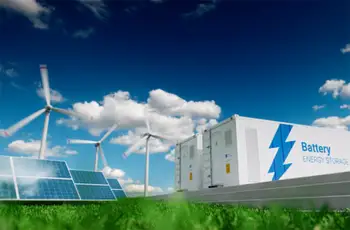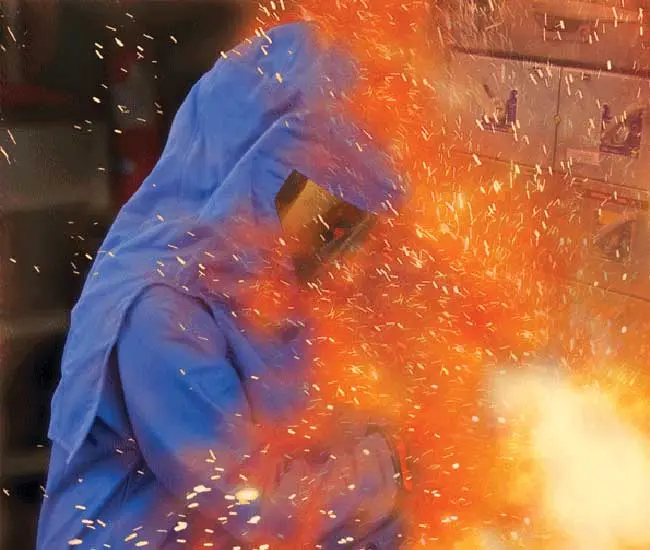What is Energy Storage?

Energy Storage Systems Course
Our customized live online or in‑person group training can be delivered to your staff at your location.

- Live Online
- 12 hours Instructor-led
- Group Training Available
Download Our OSHA 4475 Fact Sheet – Being Aware of Arc Flash Hazards

- Identify root causes of arc flash incidents and contributing conditions
- Apply prevention strategies including LOTO, PPE, and testing protocols
- Understand OSHA requirements for training and equipment maintenance
Energy storage captures electricity for later use, supporting renewable integration and grid stability. Using batteries, thermal, or mechanical systems ensures reliable backup, efficient management, flexibility, and sustainable solutions.
What is Energy Storage?
Energy storage is the process of capturing and holding energy for later use, enabling reliable, efficient, and sustainable power delivery.
✅ Supports renewable energy integration and grid reliability
✅ Provides backup power during outages and peak demand
✅ Enhances efficiency with advanced storage technologies
Energy Storage Systems Training
Energy storage (ES) is a crucial component of the world's grid infrastructure, enabling the effective management of energy supply and demand. It can be considered a battery, capable of storing power until it is needed to power something, such as a home, an electric vehicle or an entire city. ES systems are designed to store electricity in various forms, including electrical, mechanical, and thermal energy.
ES technology is constantly evolving and driven by the need for more efficient and effective solutions. By providing a more stable and efficient electricity supply, ES can help to create a more sustainable power future.
As the demand for renewable power increases and we continue to transition away from fossil fuels, ES has become increasingly important. Unfortunately, renewable electricity sources such as solar and wind are only available at certain times, which can cause issues for power grids and lead to inefficient electricity use. ES systems solve this problem by allowing excess electricity to be captured when available and used when needed, providing a more stable electricity supply.
Why Energy Storage Matters
Renewables like solar and wind don’t always coincide with demand. ES absorbs surpluses, fills shortfalls, and stabilizes frequency and voltage, allowing grids to run smoothly. It also reduces peaker reliance, defers infrastructure upgrades, and enhances resilience during extreme weather events. For intent-focused readers, see why storage is needed in Why Do We Need Energy Storage and how these benefits stack up in Why Is Energy Storage Important.
Sign Up for Electricity Forum’s Energy Storage Newsletter
Stay informed with our FREE Energy Storage Newsletter — get the latest news, breakthrough technologies, and expert insights, delivered straight to your inbox.
How Energy Storage Works
All systems do two things: charge by converting electricity into a stored form, and discharge by converting back when called upon. The form may be electrical, mechanical, or thermal, but the grid role is similar—shift power over time, manage peaks, and provide fast response. Grid operations, markets, and planning considerations are covered in Energy Storage and the Grid.
Core Technologies
Electrical storage
Lithium-ion battery energy storage systems dominate today due to their high efficiency, fast response, and scalability; see the fundamentals and architectures in Battery Energy Storage Systems. For power-quality and fast-burst roles, capacitive devices matter; design math and safe application are in Capacitor Energy Storage Formula. Materials—cathodes, electrolytes, separators, conductors—set performance, cost, and safety; see component choices in Energy Storage Materials.
Mechanical storage
Where long life, durability, or long-duration shifting is needed, mechanical approaches excel. Compressed air stores electricity in pressure and returns it through turbines; designs and trade-offs are in Compressed Air Energy Storage. Flywheels deliver rapid cycling and high power density; see use cases in Flywheel Energy Storage. New gravity concepts enable the lifting and lowering of masses to shift electricity over hours; learn the basics in Gravity Energy Storage.
Compressed air energy storage (CAES) is a proven form of electricity that helps balance electrical demand on the electricity grid. By storing excess electricity in underground caverns or tanks, CAES can later release it to generate electricity when demand is at its peak. Like other forms of energy storage, it works in conjunction with power plants and renewable resources, sometimes even integrated with hydroelectric facilities that pump water uphill during periods of low demand. This approach enhances efficiency, stabilizes the grid, and ensures the reliable delivery of electricity across all sectors.
Thermal storage
Heat and cold can be stored efficiently for buildings and solar plants. Phase-change materials, molten salts, and ice shifting are explained in Thermal Energy Storage. Coupling ES with PV unlocks self-consumption and resilience—see practical strategies in Solar Energy Storage.
Architectures and Design Patterns
Hybrid systems combine chemistries or couple electrical with thermal/mechanical to extend life and duration; design approaches are outlined in Hybrid Energy Storage System. Modular, rackable designs accelerate deployment and service; refer to the characteristics of the Stackable Energy Storage System. Fuel flexibility is also important—technical options are summarized in ES Fuel Sources, with a detailed examination of the long-term potential of hydrogen electricity storage.
Applications Across the Grid
Front-of-the-meter projects provide capacity firming, peak shaving, frequency regulation, voltage support, black-start capability, and congestion relief. Behind-the-meter systems cut demand charges, ride through outages, and enable microgrids for campuses, hospitals, and data centers. For U.S. deployments, policy context, and examples, see Energy Storage Systems in the USA.
Performance, Sizing, and Lifecycle
Key metrics include power (kW/MW), electricity (kWh/MWh), duration (minutes to days), round-trip efficiency, response time, C-rate, calendar/cycle life, safety profile, and recyclability. Correct sizing balances duty cycle, depth of discharge, warranty terms, and revenue stacking from multiple services.
Markets and Growth
Falling costs, supportive regulation, and renewable buildout are driving rapid adoption. Utility-scale installations are accelerating in North America and globally; see trajectories in Growth in Utility-Scale Energy Storage and demand/supply sizing in How Big Is Energy Storage Market. For a channel overview and article feed, start at the Energy Storage main page.
Long-Duration and the Road Ahead
To achieve very high renewable penetration, longer durations—ranging from 8 hours to multi-day and seasonal—become essential. Approaches range from flow batteries to mechanical and hydrogen pathways, summarized in Long-Term Energy Storage.
Frequently Asked Questions
What is energy storage, and why is it needed?
It captures energy when it’s cheapest or most abundant and releases it later to improve reliability, integrate renewables, and reduce peak costs.
What types exist?
Electrical (batteries, capacitors), mechanical (pumped hydro, CAES, flywheels, gravity), and thermal (molten salt, ice, phase-change), each chosen for duty cycle, response, and duration.
How does storage interact with solar?
ES shifts PV output into evening peaks, improves self-consumption, and keeps critical loads running; see scenarios in Solar Energy Storage.
Test Your Knowledge About Energy Storage!
Think you know Energy Storage? Take our quick, interactive quiz and test your knowledge in minutes.
- Instantly see your results and score
- Identify strengths and areas for improvement
- Challenge yourself on real-world electrical topics
What technologies support operations over very long durations?
Flow batteries, CAES, gravity systems, and hydrogen can extend duration; high-level comparisons are in Long-Term Energy Storage.
Energy storage is now a core grid asset. By firming renewables, stabilizing operations, and providing backup across sectors, it underpins a cleaner, more resilient electricity system. As technologies diversify and costs decline, ES will play a pivotal role in anchoring the next stage of grid modernization.
Related Articles








